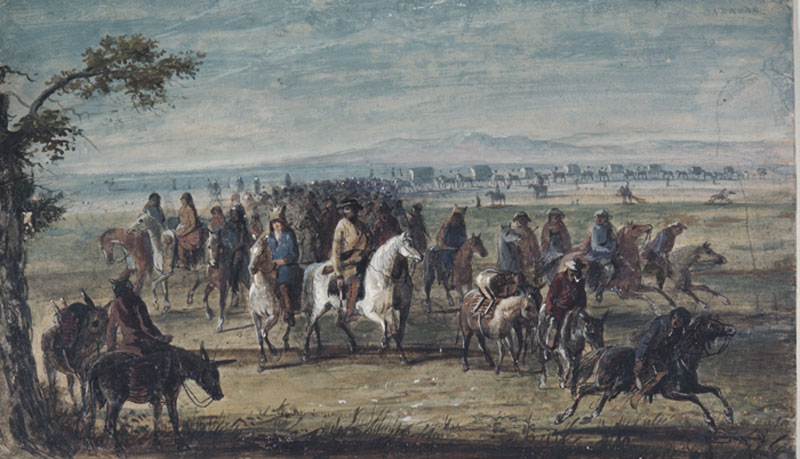Historical Background

One of the most fascinating periods in 19th century America was the fur trade in the far West. At the heart of this era of exploration and contact was the exchange of goods between the Indians and the fur trappers and traders at the summer rendezvous when they came together to trade, to celebrate their survival and to plan the next year's hunt. Here the traders exchanged manufactured goods with the trappers and Indians for furs and provisions. The most popular location for these gatherings was along the Green River at the foot of the Wind River mountain range near present-day Pinedale, Wyoming.
During this period, extraordinary encounters brought together not only the world of indigenous peoples and the world the nomadic trappers, but a third world: one of Eastern American and European culture and perspective. The Green River Rendezvous of 1837 was attended by Scottish patron and adventurer, William Drummond Stewart, and the artist he hired, Alfred Jacob Miller, who would record this gathering with evocative sketches, paintings, and narrative. At this singularly historic place and time, THREE WORLDS MEET.
The rich portfolio of Alfred Jacob Miller's paintings that today graces countless museum walls and innumerable history book pages grew from the many sketches and watercolors he created that summer. Miller's scenes of campfire meals, hunts, meetings and an array of daily activities, as well as portraits of trappers, traders and Indians, are a treasury of esteemed art of the early American west.

